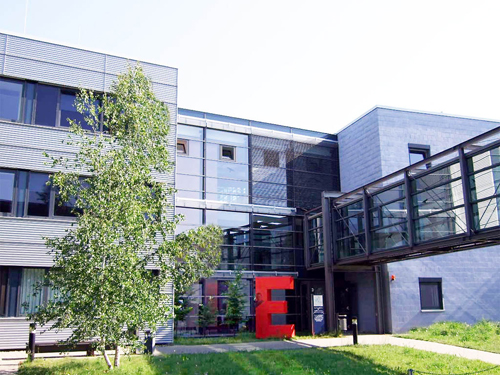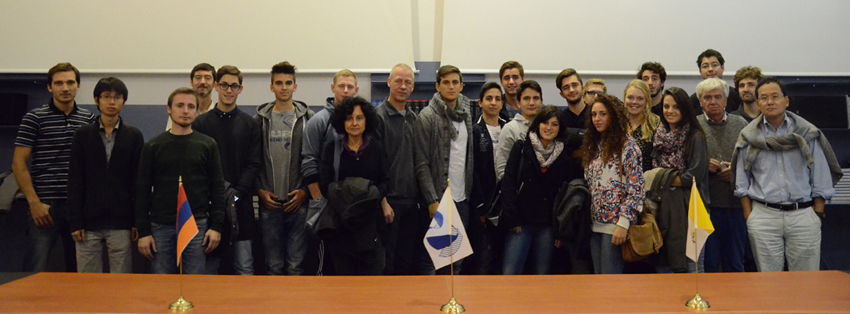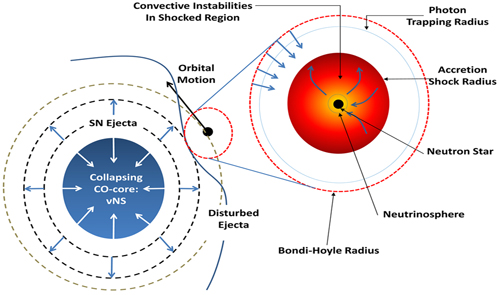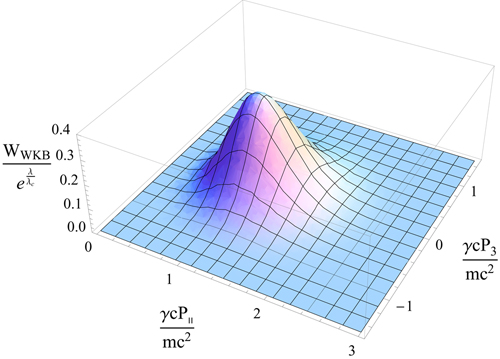

| Newsletter French July/October |

|

|





ICRANet Newsletter
Special Issue
July/October
1er meeting scientifique ICRANet in Yerevan
Trous noirs: les sources d'énergie les plus importantes dans l'Univers. Principaux résultats scientifiques
Après la cérémonie d'ouverture, le Prof. Ruffini a présenté “Black Holes, Gamma-Ray Burst and Supernovae. The Leading Progress in Physics and Relativistic Astrophysics” , qui couvre l'histoire de la découverte de sursauts gamma ainsi que la plupart des récents résultats de l'observation / modélisation des sursauts gamma et aussi le progrès récents pour comprendre la connexion entre GRB et Supernovae.
La section la plus importante de cette réunion arménienne a vu experts du monde entier Christoph H. Keitel (allemand), Karen Hatsagortsyan (arménien) et Antonino Di Piazza (italien, de l'Institut Max Planck de Heidelberg, Allemagne) présenter leurs études sur la physique nucléaire en utilisant des lasers intenses, photons de haute énergie par la collision des faisceaux laser et une révision générale des phénomènes de forts champs électromagnétiques. Deux cours sur l'astrophysique de haute énergie de rayons gamma ont été donnés par Razmick Mirzoyan (Allemagne-Arménie) et Alessandro De Angelis (Italie). Mirzoyan a montré des résultats récents d'observations de sources galactiques (supernova W51 et crabe nébuleuses), sources extragalactiques (IC 310, 412 etc) Mrk et les faits saillants de l'état actuel du télescope Cherenkov. Les études sur l’Astrophysique de haute énergie de rayons gamma et des énergies relativement faibles (environ 10 GeV) avec détecteurs Cherenkov ont été présentés par De Angelis. Le groupe ICRANet (étudiants EMJD, membres de la faculté ICRANet) a présenté les résultats de leurs études récentes sur les sursauts gamma et les supernovae et les connexions avec le GRBs. La physique des étoiles à neutrons et les progrès récents ont été examinées par Jorge Rueda, Riccardo Belvedere et Kuantay Boshkayev. En outre, Eckhard Strobel, Yuanbin Wu et Hendrik Ludwig et d'autres ont présenté leurs recherches sur les champs électromagnétiques forts et discuté avec eux des phénomènes et des applications pertinentes en physique et en astrophysique. Paolo Giommi et Bruno Sversut ont présenté un échantillon de haute synchrotron blazars qui sont intéressants pour les observations TeV. Ils ont conclu que la plupart d'entre eux seraient détectés par la prochaine gamme de télescope Cherenkov, place certains d'entre eux au torchage Etat, même par les télescopes Cherenkov de génération actuelle. Prof. Claus Laemmerzahl de l'Université de Brême a présenté un talk sur le "mouvement des particules de test dans le trou noir espaces-temps réguliers".
Actes de la conférence «Zeldovich-100»
Toutes les contributions pour les actes de la conférence « Zeldovich-100 », qui a eu lieu à Minsk en Mars 2014, sont arrivés à l’ICRANet: parmi eux, 18 documents de la session plénière et 32 documents des sessions parallèles. Les actes seront publiés d'ici la fin de l'année 2014 dans des numéros spéciaux des revues «Astronomy Reports» (documents de la session plénière) et de «Nonlinear Phenomena in Complex Systems» (documents des sessions parallèles). Les deux journaux sont indexés dans Scopus, tandis que « Astronomy Reports » est également indexé dans Thomson Reuters. Les rédacteurs des numéros spéciaux sont Sergei Kilin (Académie nationale des sciences du Bélarus), Remo Ruffini (ICRANet) et Gregory Vereshchagin (ICRANet).
Publication des actes de la 13eme Réunion italienne-coréenne sur l’Astrophysique relativiste (15-19 Juillet 2013, Ewha Womans University)
Lors de cette réunion, qui a lieu une fois tous les deux ans alternativement en Italie et en Corée (voir: ici), en plus de nombreux coréens professeurs, chercheurs et étudiants, plus de 10 participants de la ICRANet ont participé et présenté leurs travaux scientifiques lors de cette réunion. Leurs contributions ont été récemment publiés dans l’mportant "Journal of Korean Physical Society". A ce lien est possible consulter une prévue : http://link.springer.com/journal/40042/65/6/page/1
Collaboration entre ICRANet et l'Institut A. Einstein de Potsdam
En Juillet ICRANet a commencé le nouveau programme sur les «solutions précises dans le relativité générale supersymétrique» en collaboration avec le groupe du professeur Hermann Nicolai à l'Institut Albert Einstein à Potsdam (Allemagne). Cette nouvelle orientation est maintenant ajouté à la liste des thématiques du secteur ICRANet "solutions exactes des équations d'Einstein-Maxwell".
L'objectif est avant tout la construction des solitons supergravitationeles exactes.
Signed new agreements in Brazil, Italy and Mexico
La fervente activité diplomatique du prof. Ruffini continue en Amérique du Sud où, entre Juillet et Août, ont été signé des nouveaux accords importants avec des grandes universités au Brésil et au Mexique.
En particulier, ont été signés les accord suivants: le 1er Juillet, à Niterói (Brésil), avec l'UFF - Universidade Federal Fluminense; le 9 Juillet à Mexico city avec l'UAM - Universidad Autónoma Metropolitana; le 26 Août à Florianópolis (Brésil) avec l'UFSC - Universidade Federal de Santa Catarina; et le 29 Août, aussi au Brésil, avec l'UFPE - Universidade Federal de Pernambuco. Le premier de Août, à Rome, a été signé l'accord avec le CNR - Centre national des recherches, dirigée par le prof. Luigi Nicolais.
Grand succès pour la "Nuit des chercheurs" chez ICRANet
Pour la deuxième année consécutive, le Centre ICRANet de Pescara a participé à "La Nuit des chercheurs 2014» italienne pour promouvoir, chez le plus grand public, l'activité de recherche en Italie. Dans la matinée du vendredi 26 Septembre, les scientifiques ICRANet ont présenté les sujets de leurs recherches à 150 élèves des deux dernières années des écoles secondaires de Pescara. En outre, le siège est restée ouvert dans la soirée avec un programme de visites guidées pour le public, qui a pu voir de leurs propres yeux les lieux où les scientifiques de ICRANet approfondissent notre connaissance des étoiles et des lois qui régissent l'univers.
Enfin, chez le prestigieuse Aurum de Pescara, plusieurs scientifiques de notre Centre ont animé un riche programme de conférences et d'observations télescopiques: le Prof. Ruffini a parlé de "Supernovae, Gamma Ray Burst et Trous Noirs» et le dr. Costantino Sigismondi a exploré le thème "Supergéantes Novae et les variables". En outre, jusqu'à minuit les dr. Luca Izzo et dr. Costantino Sigismondi ont mené des observations par le télescope à la fois du soleil et des étoiles.
Délégation d'étudiants danois en visite au centre ICRANet de Pescara
Le 23 Octobre, une délégation de six étudiants danois de Svendborg, guidé par le prof. Mads Fjeldvig Gammeltoft, invités par le prof. Alessandra Palma du Lycée Scientifique "Leonardo da Vinci" de Pescara, a visité notre centre de Pescara, où ils ont profité, après les salutations du Directeur, prof. Remo Ruffini, de la leçon intitulée «La lumière et l'exploration de l'Univers" donnée par le Dr. Gregory Vereshchagin, membre de la faculté ICRANet.
Présenté l'affiche du quatorzième Marcel Grossmann - Rome, Italie, 12-18 Juillet, 2015
Le quatorzième Marcel Grossmann Meeting se tiendra à Rome, en Italie, à l'Université de Rome "Sapienza", du 12 au 18 Juillet 2015. Depuis 1975, les Marcel Grossmann meetings ont été organisés afin de fournir des occasions pour discuter des progrès récents dans la gravitation , la relativité générale et les théories des champs relativistes, mettant l'accent sur les fondements des mathématiques, des prédictions physiques et des tests expérimentaux. L'objectif de ces rencontres est de susciter les échanges entre les scientifiques qui peuvent approfondir notre compréhension des structures spatio-temporelles ainsi que pour examiner l'état des expériences en cours visant à tester la théorie de la gravitation d'Einstein soit à partir du sol ou de l'espace. Les réunions précédentes ont eu lieu à Trieste (1975 et 1979), Shanghai (1982), Rome (1985), Perth (1988), Kyoto (1991), Stanford (1994), Jérusalem (1997), Rome (2000), Rio (2003), Berlin (2006), Paris (2009) et Stockholm (2012). Les scientifiques intéressés devraient aborder un membre de l'un quelconque des comités d'organisation ou le secrétariat de la conférence.
Cette édition du Marcel Grossmann Meeting marque le 100e anniversaire des équations d'Einstein, l'Année internationale de la Lumière 2015, organisées par l'UNESCO, et le Jubilé d’or de l’astrophysique relativiste; chacun d'eux sera célébrée par le MG14 et d'autres réunions satellites en Arménie, Brésil, Chine, France, Allemagne, Inde, Israël, la Corée, le Mexique et Etats-Unis. L'affiche du meeting est prêt et peut être téléchargé à l'adresse: http://www.icra.it/mg/mg14/MG14_poster.pdf La planification du programme scientifique est en cours, avec le renouvellement de sessions parallèles dernières sélectionnés et l'introduction de nouveaux. Site Web: http://www.icra.it/MG/mg14/ email: mg14@icra.it
ICRANet Faculty and Student’s Scientific Research articles
GRB 130427A and SN 2013cq: A Multi-wavelength Analysis of An Induced Gravitational Collapse Event
R. Ruffini, Y. Wang, M. Kovacevic, C.L. Bianco, M. Enderli, M. Muccino, A.V. Penacchioni, G.B. Pisani, J.A. Rueda
Accepted by ApJ In the particle physics, the interaction between particles generates new particles, named as S-matrix. For instance, a pair of quark and anti-quark produces W/Z boson and Higgs boson, the outcome of electron and positron interaction could be a pair of muon and anti-muon, the duration of such interaction is fleeting, the above two reactions only take 10−26 s and 10−23 s respectively. In the marco-scale astrophysics, some phenomena are apparently similar to the micro-scale particle physics, a famous example is the similarity of electron and blackhole, both can be completely characterized by only mass, electric charge, and angular momentum. Here in our new accepted Astrophysical Journal paper, we introduce a new celestial matrix, C-matrix, an analogue to the S-matrix (Fig.1). C-matrix depicts a binary system composed of one neutron star and one massive star as the initial state, and the products after about 100s interaction are one new neutron star and one black hole. The story of this process can be outlined as: The massive star undergoes a supernova and eject its massive shell, the companion neutron star accretes the ejecta until reaching its critical mass and collapses into a black hole, simultaneously an over critical electrical field is generated around the black hole and electro-positron plasma are produced from it, this plasma flow expands ultra-relativisticly and collides with the inter-stellar medium, which gives origin to the gamma-ray burst (GRB), GRB is considered as an energetic explosion which emits huge abundant photons, mainly the gamma-rays. On April 27, 2013, such aforementioned event occurred and triggered Fermi satellite, later various satellites and telescopes joined the observation. This event was named as GRB 130427A, it is one of the few GRBs which has hundreds of seconds simultaneous data in the optical, X-ray and GeV emission, especially precious is its GeV emission, due to the long duration, high intensity and containing the highest energy photon (95.3 GeV) ever observed in GRBs. We proceeded to make a multi-wavelength analysis. The high energy GeV emission appears to be detectable at the end of the prompt radiation phase(∼ 20s), when the fluence of X-ray and γ-ray of the prompt exponentially decrease and becomes transparent for GeV photons. After 200s, the Lorentz factors of X-ray and GeV are very different, and their physical origin are necessarily different. The high energy can originate from the interaction of some of the physical components (e.g., neutron star and black hole) newly created in the C-matrix. ![fig1 [fig1]](newsletters/luglio2014/fig1_small.jpg)
Figure 1: Three different matrices in fundamental physics. The first is the quark matrix leading to a Higgs boson. In the middle is the classical electron-positron pair matrix, generating an muon and anti-muon pair. The third matrix is the celestial one, which is considered in the present work. ∆t is the duration of intermediate state. The interaction of the GRBs with the SN ejecta may well generate the X-ray emission and the associated thermal component. By analyzing the X-ray data from 195s to 461s, a crucial evidence was found, that adding a blackbody component could efficiently improve the fitting (Fig. 3), the obtained blackbody temperature is in the range of 0.3 KeV to 0.5 KeV, the radiation radius is deduced from about 7 × 1012 cm to 2.8 × 1013 cm, with the expansion speed at 0.8c, c is the speed of light. These above value is typical for the supernova ejecta accelerated by the collision with GRB outflow. GCN 14526: The late X-ray observations of GRB 130427A by Swift-XRT clearly evidence a pattern typical of a family of GRBs associated to supernova (SN) following the Induce Gravitational Collapse (IGC) paradigm (Rueda & Ruffini 2012; Pisani et al. 2013). We assume that the luminosity of the possible SN associated to GRB 130427A would be the one of 1998bw, as found in the IGC sample described in Pisani et al. 2013. Assuming the intergalactic absorption in the I-band (which corresponds to the R-band rest-frame) and the intrinsic one, assuming a Milky Way type for the host galaxy, we obtain a magnitude expected for the peak of the SN of I = 22 - 23 occurring 13-15 days after the GRB trigger, namely between the 10th and the 12th of May 2013. Further optical and radio observations are encouraged. After the first days observation, we found that the X-ray afterglow of GRB 130427A overlaps other GRBs induced by C-matrix (Fig.4), we concluded that this new GRB shared the same mechanism, which means a supernova is inevitable in the system though the optical signal is too weak too be observed, immediately we sent a letter to GCN on May 2, 2013, predicting that the optical R-band of a SN will reach its peak magnitude in about 10 days in the cosmological rest-frame on the basis of the IGC paradigm, and we encouraged observations. ![fig2 [fig2]](newsletters/luglio2014/fig2_small.jpg)
Figure 2: Flux of first 700 s. Blue points are the Fermi-LAT high energy emission from 100 MeV till 100 GeV, grey dotted line represents the Fermi-GBM, from 10 keV to 900 keV, green dashed line represents the photons detected by Swift BAT from 10 keV to 50 keV, and red solid line is the soft X-ray Swift-XRT detection, in the range of 0.3 KeV to 10 KeV. From this figure, clearly the Fermi-LAT emission reaches highest fluence at about 20 s while the gamma-ray detected by Fermi-GBM releases most of the energy within the first 10 s. ![fig3 [fig3]](newsletters/luglio2014/fig3_small.jpg)
Figure 3: Spectral fitting of three time intervals (196s - 246s, 246s - 326s, 326s - 461s) in Episode 3, data come from Swift-XRT (0.3 KeV - 10 KeV, without pile-up area). Black points are the deduced data, green dashed line presents the thermal component, blue long-dashed line is the power law component, and red line shows the combination of these two components. Clearly the flux of thermal component drops and the temperature decreases along the time. ![fig4 [fig4]](newsletters/luglio2014/fig4_small.jpg)
Figure 4: Overlapping of GRB 130427A and GRB 060729. Green cross is the light curve of GRB 060729. Red triangle and orange dots represent the light curve of GRB 130427A respectively before and after May 2, 2013. The vertical line marks the time of 2 × 104 s which is the lower limit for the domain of validity of the Pisani relation prior to GRB 130427A.
Letter in collaboration with Pror. Fryer, Los Alamos:
Hypercritical Accretion, Induced Gravitational Collapse, And Binary-Driven Hypernovae
Chris L. Fryer, Jorge A. Rueda, Remo Ruffini
ApJ Letters 793, 36 (2014) The induced gravitational collapse (IGC) paradigm has been successfully applied to the explanation of the concomitance of gamma-ray bursts (GRBs) with supernovae (SNe) Ic. The progenitor is a tight binary system composed by a carbon-oxygen (CO) core and a neutron star (NS) companion. The explosion of the SN leads to hypercritical accretion onto the NS companion which reaches the critical mass, hence inducing its gravitational collapse to a black hole (BH) with consequent emission of the GRB. The first estimates of this process were based on a simplified model of the binary parameters and the Bondi-Hoyle-Lyttleton accretion rate. We present here the first full numerical simulations of the IGC phenomenon. We simulate the core-collapse and SN explosion of CO stars to obtain the density and ejection velocity of the SN ejecta. We follow the hydrodynamic evolution of the accreting material falling into the Bondi-Hoyle surface of the NS all the way up to its incorporation to the NS surface. The simulations go up to BH formation when the NS reaches the critical mass. For appropriate binary parameters the IGC occurs in short timescales (100-1000s) owing to the combined effective action of the photon trapping and the neutrino cooling near the NS surface. We also show that the IGC scenario leads to a natural explanation for why GRBs are associated only to SN Ic with totally absent or very little helium.
Semiclassical pair production rate for time-dependent electrical fields with more than one component: WKB-approach and world-line instantons
Strobel, Eckhard; Xue, She-Sheng
Nuclear Physics B 886, 1153 (2014) Description: The Schwinger-effect describes how pairs of electrons and positrons can be produced from the vacuum with the help of a very strong electric field. While this effect is believed to play a important rule in astrophysics, especially for gamma ray burst, it has never been observed directly in a laboratory. The reason for this is that currently one can not produces the field strengths which are necessary to produce a measurable number of pairs. This might change with the construction of new high energy laser systems, like the Extreme Light Infrastructure (ELI). It has recently been shown that pair creation rate changes over several orders of magnitude depending on the form of the laser pulse. To design an experiment in which Schwinger pair creation can be measured directly it is substantial to understand this dependence. While a lot of computations can be performed numerical it is worthwhile to continue to study approximate analytical methods to strengthen this understanding. In the paper we generalize two well-known analytical methods, namely the WKB and the world line instant on method, to fields which have more than one time-dependent component. The comparison of the two methods shows when to best use which of the methods. The generalizations enables us to find a analytic solution for the momentum spectrum of the produced pairs in a rotating electric field. As displayed in Figure no pairs are produced which have zero momentum. This is a big difference to the known cases of one-component fields, where most pairs are produced with zero momentum. Since the rotating electric field is a approximation for the field in the anti-node of a circularly polarized standing wave, which can be produced in laser experiments, the characteristic shape of this momentum spectrum might help to distinguish the pairs produced by the Schwinger process from those produced due to other strong field effects.
Submitted Articles:
Induced Gravitational Collapse At Extreme Cosmological Distances: The Case Of Grb 090423
R. Ruffini, L. Izzo, M. Muccino, G.B. Pisani, J.A. Rueda, Y. Wang, C. Barbarino, C.L. Bianco, M. Enderli, M. Kovacevic A&A 569, A39 (2014)
The Genuine Short Grb 090227b And The Disguised By Excess Grb 090510
M. Muccino, C.L. Bianco, L. Izzo, Y. Wang, M. Enderli, M. Kovacevic, G.B. Pisani, A.V. Penacchioni, R. Ruffini Gravitation and Cosmology, 20, 197 (2014)
On The Core-Halo Distribution Of Dark Matter In Galaxies
Remo Ruffini, Carlos Argüelles, Jorge A. Rueda Submitted to Phys. Rev. Lett.
Just Published Articles:
Semiclassical Pair Production Rate For Time-Dependent Electrical Fields With More Than One Component: Wkb-Approach And World-Line Instantons
Strobel, Eckhard; Xue, She-Sheng Nuclear Physics B 886, 1153 (2014)
Transparency Parameters From Relativistically Expanding Outflows
Bégué, D.; Iyyani, S. ApJ 792, 42 (2014)
Dynamical Instability Of White Dwarfs And Breaking Of Spherical Symmetry Under The Presence Of Extreme Magnetic Fields
J. G. Coelho, R. M. Marinho, M. Malheiro, R. Negreiros, D. L. Cáceres, J. A. Rueda, R. Ruffini ApJ 794, 86 (2014)
Are The Most Super-Massive Dark Compact Objects Harbored At The Center Of Dark Matter Halos?
Carlos R. Argüelles, Remo Ruffini Essay selected for Honorable mention 2014 by the Gravity Research Foundation
Strangeness Content Of Neutron Stars With Strong Sigma-Hyperon Repulsion
M. Razeira, A. Mesquita, C. A. Z. Vasconcellos, R. Ruffini, J. A. Rueda, R. O. Gomes Astronomische Nachrichten 335, 739 (2014)
Effective Field Theory For Neutron Stars With Strong Sigma--Hyperon Repulsion
M. Razeira, A. Mesquita, C. A. Z. Vasconcellos, R. Ruffini, J. A. Rueda, R. O. Gomes Astronomische Nachrichten 335, 733 (2014)
A search for Fermi bursts associated with supernovae and their frequency of occurrence
Kovacevic, M.; Izzo, L.; Wang, Y.; Muccino, M.; Della Valle, M.; Amati, L.; Barbarino, C.; Enderli, M.; Pisani, G. B.; Li, L. Astronomy & Astrophysics, Volume 569, id.A108, 6 pp. (A&A Homepage) |
|||||||
|
||











